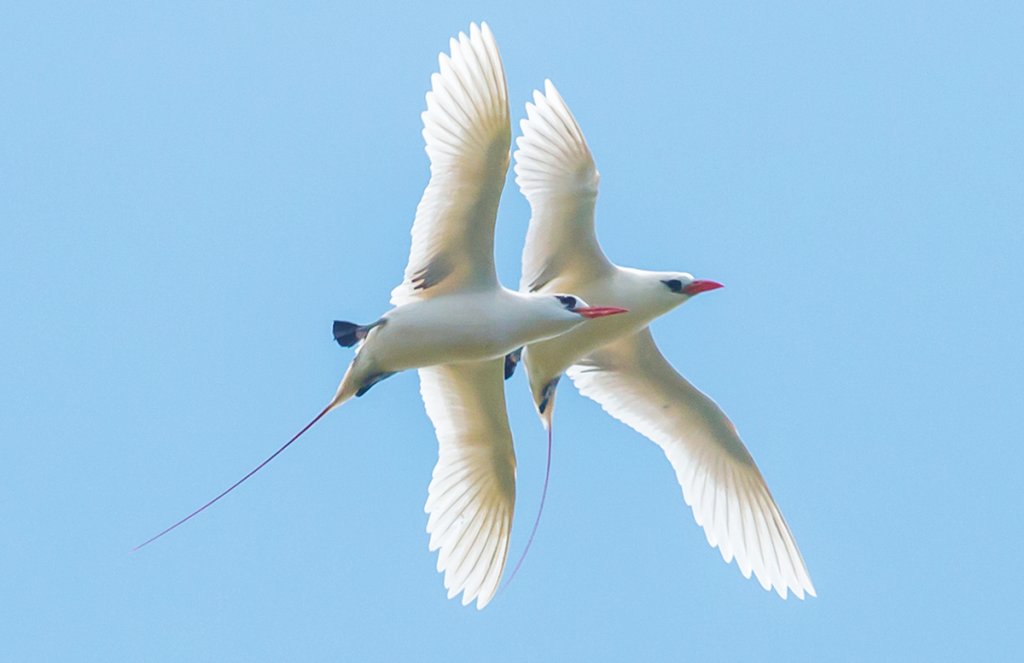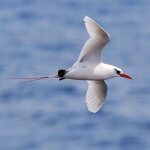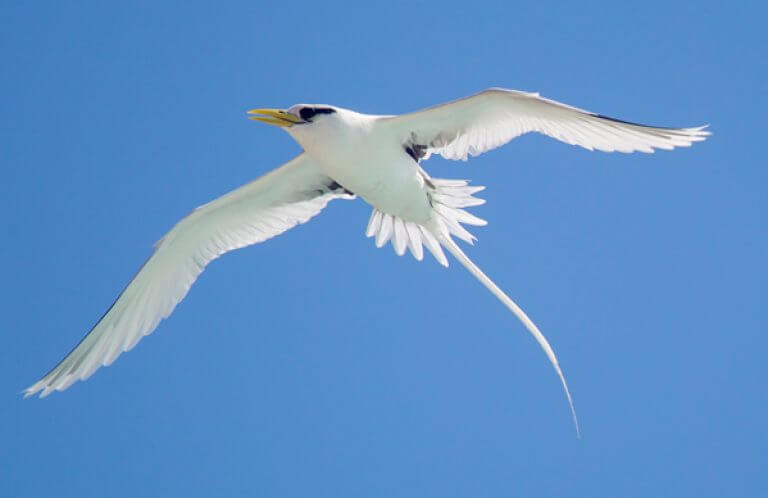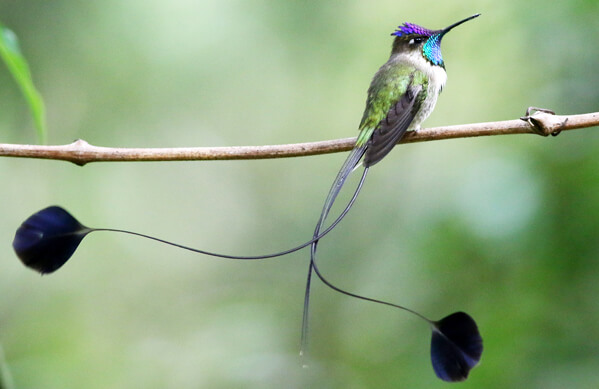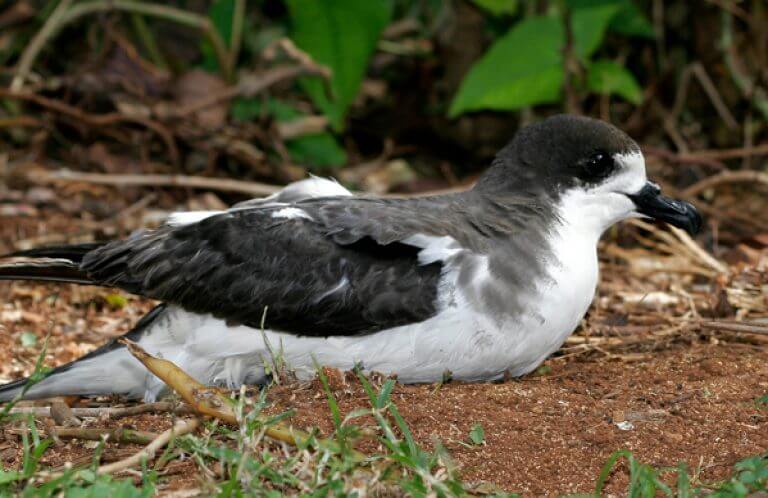About the Red-tailed Tropicbird (Koaʻeʻula)
The rarest of the three tropicbird species occurring in U.S. waters, the Red-tailed Tropicbird nests in the Hawaiian Islands and disperses widely across the Pacific Ocean during its nonbreeding season. This bird's red bill and stiff red tail streamers are key identification marks; other ID features include shining white plumage with a pinkish wash, black markings around each eye, and small, set-back legs and webbed feet. It is larger and heavier than the related White-tailed Tropicbird, which also nests in Hawai'i.
Although its small legs and feet make the Red-tailed Tropicbird awkward while on land, it is an aerial wonder, spending most of its life in flight over the ocean like the Great Frigatebird or Short-tailed Albatross.
Known as Koaʻeʻula by Native Hawaiians, this graceful bird also has folk names such as red-tailed bos'nbird, silver bos'nbird, and strawtail.
A Nautical Nickname
Sailors sometimes refer to tropicbirds as “bosun” (boatswain) birds because of their shrill, repeated calls, thought to resemble a boatswain's whistle, used to communicate orders on the deck of a vessel. Another of its nicknames, “strawtail,” refer to its long, rather stiff central tail plumes, which were prized as decorations by native Hawaiian, Maori, and other Polynesian peoples across its range.
Songs and Sounds
Listen to a group of Red-tailed Tropicbirds calling here:
Breeding and Feeding
Made in the Shade
The Red-tailed Tropicbird engages in complex aerial displays at the beginning of each breeding season, when these birds gather in small colonies at suitable nesting islands. Groups fly together in large circles while calling loudly; then pairs break away and “dance” in the air together, one above the other, switching places periodically. The pair performs aerobatic vertical circles, loops, and dives, and even flies backwards (a feat matched only by members of the hummingbird family, such as the Marvelous Spatuletail), while swinging their red tail streamers from side to side.
Once bonded, a tropicbird pair may remain together for many years. Their nest site (often scouted out during courtship flights) is in the shade of a shrub or in a cliff crevice. The nest itself is a simple scrape, where the female lays a single egg. Successful nest sites are often reused for several seasons.

Both parent tropicbirds take turns incubating their egg for about six weeks. The chick hatches covered with pale down and is brooded intensively by its parents during its first week of life. The adults feed their chick by regurgitating food directly into its throat. After several months of parental care, the chick fledges and flies out to sea to begin life on its own.
The Red-tailed Tropicbird feeds far from land over the open ocean. It tends to be solitary, rarely seen with groups of other seabirds. This seabird captures flying fish, squid, and other fish by plunge-diving into the water; it sometimes follows ships and will capture flying fish disturbed by the vessel.
Region and Range
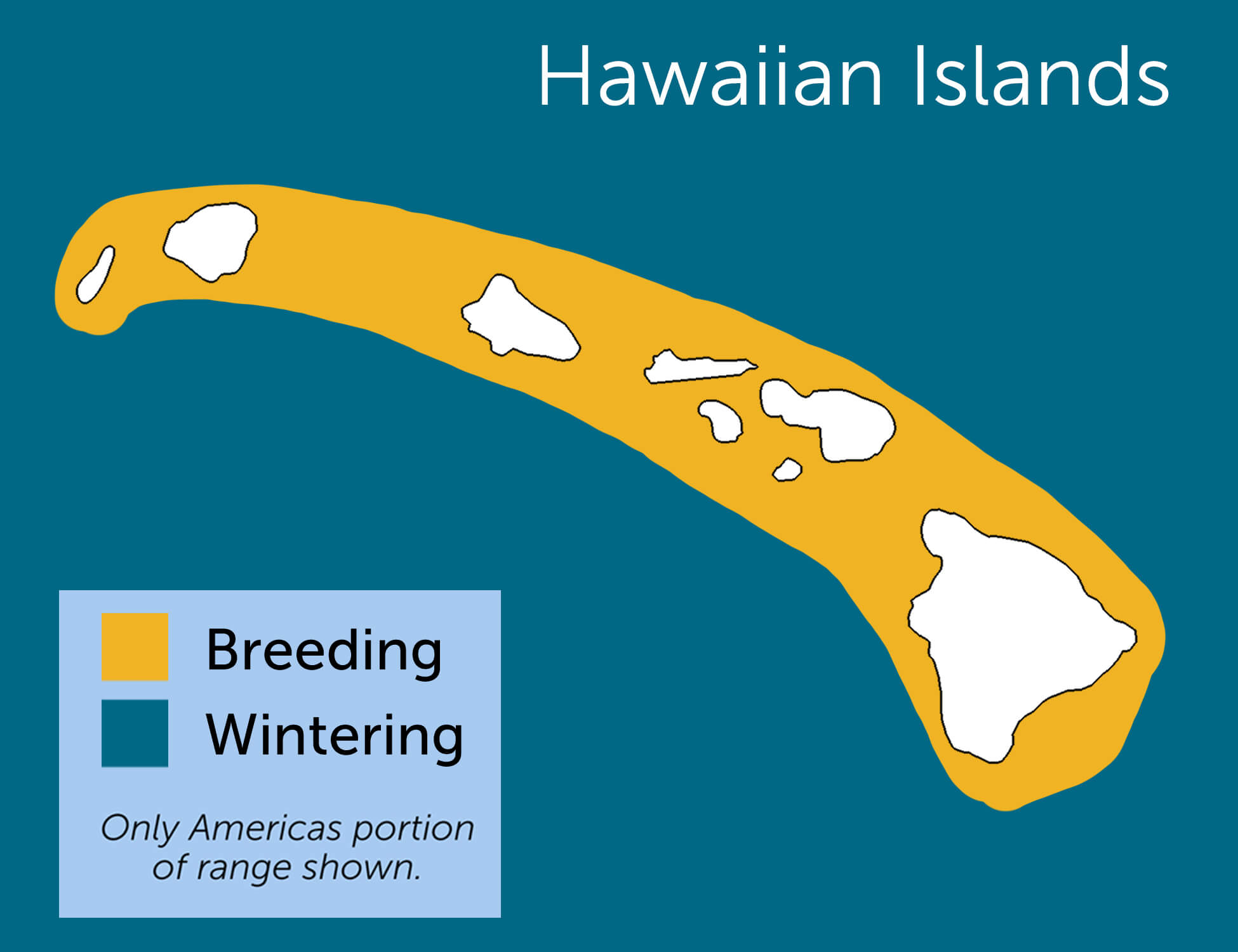
Four subspecies of Red-tailed Tropicbird are recognized; with one breeding throughout the U.S.'s main and Northwestern Hawaiian Islands. The largest populations of this subspecies nests on Midway Atoll and Laysan.
Conservation
The most serious threats to the Red-tailed Tropicbird come from introduced species, such as rats and feral cats, which prey on eggs and young at nesting sites. Invasive insects, such as yellow crazy ants, also kill nestlings and even adults, and invasive plants such as Verbesina choke out suitable nesting habitat.

Help support ABC's conservation mission!
ABC's efforts to bring attention to the problem of outdoor cats and other invasive species have led to a variety of solutions to help keep seabirds (and all birds) safer.
We are also working to protect nesting islands for Red-tailed Tropicbird and other seabirds such as Newell's Shearwater and Hawaiian Petrel, particularly by using fencing to protect key nesting colonies. ABC and partner Moloka‘i Land Trust recently completed a predator-proof fence at the Mokio Preserve on Hawai‘i's Moloka‘i Island that will protect the Red-tailed Tropicbird and many other nesting seabird species, including the Laysan Albatross, Brown Booby, and Band-rumped Storm-Petrel.
Get Involved
Policies enacted by the U.S. Congress and federal agencies have a huge impact on Hawai'i's birds. You can help shape these rules for the better by telling lawmakers to prioritize birds, bird habitat, and bird-friendly measures. To get started, visit ABC's Action Center.
Our Hawaiian partners frequently need help with habitat restoration and other projects benefiting birds. If you live in or will be visiting Hawai'i and would like to volunteer, check the following Facebook accounts for opportunities: Kaua'i Forest Bird Recovery Project, Maui Forest Bird Recovery Project, and Mauna Kea Forest Restoration Project.
American Bird Conservancy and local partners are restoring forests, protecting critical habitat, and much more to save native Hawaiian birds. This is a monumental undertaking, requiring the support of many, and you can help by making a gift today.





































